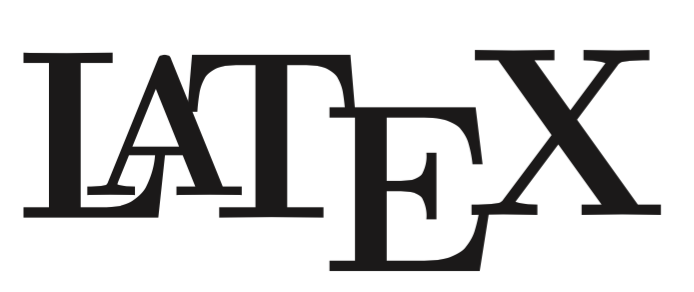What is Latex?
LaTeX is a typesetting system commonly used for the creation of scientific and technical documents, particularly those that contain mathematical equations, formulas, and complex structures. It is based on the TeX typesetting program created by Donald Knuth in the late 1970s.
Getting started with LaTeX
LaTeX can be run on different operating systems, including Windows, macOS, and Linux. Installations like TeX Live or MiKTeX on Windows, MacTeX or BasicTeX on macOS, and texlive package on Linux facilitate LaTeX usage.
Online platforms like Overleaf and ShareLaTeX offer browser-based LaTeX editing and compilation, eliminating the need for local installations. These platforms provide collaborative features and access to various templates.
LaTeX code structure
To begin writing a document in LaTeX, important components need to be understood and utilized effectively.
\documentclass{article}: Declares the document class, which determines the overall structure and formatting of the document.Packages: Additional packages can be included to extend LaTeX's functionality. They are typically declared using the
\usepackage{}command and can provide features such as mathematical symbols, graphics, and more.\title,\author, and\date: These commands set the title, author, and date of the document, respectively. You can customize these elements as per your requirements.\begin{document}and\end{document}: These mark the beginning and end of the document, respectively. Everything between these commands is considered the document content.\maketitle: This command generates the title based on the information provided using\title,\author, and\date.Sections and Subsections: Sections and subsections help structure the document. They are declared using
\section{}and\subsection{}commands, followed by the respective heading title.Conclusion: The concluding section wraps up the document and provides a summary or final thoughts.
Here is a straightforward example of LaTeX code that includes all the essential elements needed for a basic document.
\documentclass{article}\title{My First LaTeX Document}\author{Your Name}\date{\today}\usepackage{amsmath}\begin{document}\maketitle\section{Introduction}This is the introduction section of my document. LaTeX is a powerful typesetting system for creating professional-looking documents.\subsection{Educative}Educative provides interactive and adaptive courses for software developers with pre-configured developer environments in the cloud.\section{Conclusion}In conclusion, LaTeX provides excellent control over document formatting and is widely used in academic and technical writing.\end{document}
Example of LaTeX document
To illustrate the functionality of LaTeX, we will write a simple document in LaTeX.
Code
\documentclass{article} % Document class declaration\title{My First LaTeX Document} % Title of the document\author{Educative.io} % Author's name\date{\today} % Date\begin{document} % Begin the document\maketitle % Generates the title\section{Introduction} % Section headingThis is the introduction section of my document. LaTeX is a powerful typesetting system for creating professional-looking documents.\section{Mathematical Expressions} % Another sectionHere are a few examples of mathematical expressions:\subsection{Equation} % Subsection headingThe quadratic equation is given by:\begin{equation}ax^2 + bx + c = 0\end{equation}mple of a\subsection{Fraction} % Another subsectionA fraction example:\begin{equation}\frac{1}{2} + \frac{3}{4} = \frac{5}{4}\end{equation}\subsection{Square Root} % Another subsectionThe square root of a number:\begin{equation}\sqrt{16} = 4\end{equation}\subsection{Summation} % Another subsectionSummation of a series:\begin{equation}\sum_{i=1}^{n} i = \frac{n(n+1)}{2}\end{equation}\section{Conclusion} % Another sectionIn conclusion, LaTeX provides excellent control over document formatting and is widely used in academic and technical writing.\end{document} % End the document
The document contains a title, author, and date. It consists of two main sections: Introduction and Mathematical Expressions. The Mathematical Expressions section includes examples such as a quadratic equation, fraction, square root, and summation. Lastly, there is a Conclusion which ends the document.
Output
When you compile the above LaTeX code, it will generate an output that is a formatted document. The mathematical expressions are presented formally, demonstrating the professional appearance of the output.
LaTeX features
LaTeX is a powerful tool that is commonly used in research papers for subjects like mathematics and physics. It excels in handling complex mathematical expressions and specialized formatting that regular word processors may struggle with.
Here are a few features of LaTeX:
Mathematical typesetting: It extensively supports mathematical equations, symbols, matrices, and notations.
Cross-referencing: It allows easy referencing of figures, tables, sections, and other elements within the document.
Bibliography management: Provides tools for managing bibliographic references and automatically generating bibliographies.
Customization: Allows users to define their document classes and customize styles, layouts, and formatting according to their needs.
Platform independence: Available on multiple operating systems (Windows, macOS, Linux) and can be used with various text editors.
Conclusion
LaTeX offers precise control over document formatting, making it an excellent choice for academic, scientific, and technical writing.
Free Resources
